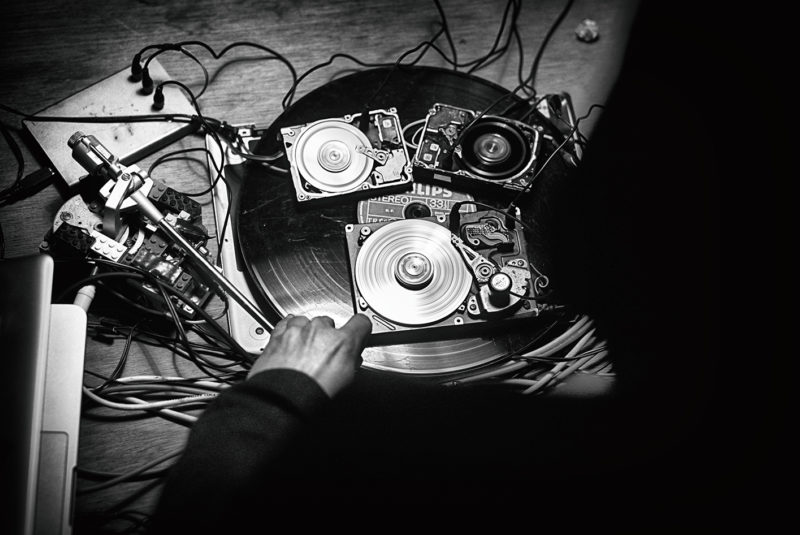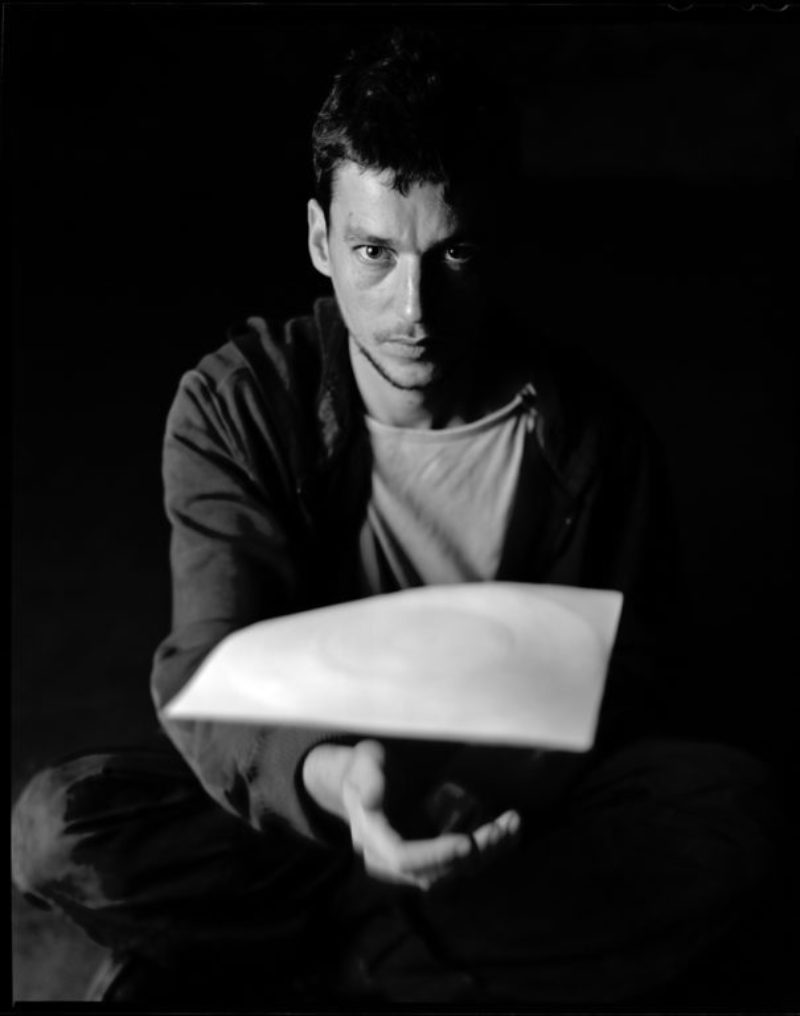Yann Leguay

Joeri Bruyninckx
Can you explain to me what I am listening to when I listen to Headcrash? From what I understood, it’s the sound of four hard drives where you put the needle of a turntable on.
Yann Leguay
The set-up consists out of four open hard drives that are installed on a small plank full of magnetic sensors. There are the tone arms and needles from turntables, plus some other sensors, and the ability to get the sound directly from the head of the hard drives by plugging a cable in the right place on the circuit board.
JB
You seem to have a rather ‘hands off’ approach in the making of this music. You create the installation, but once that’s done, you let the machines do their thing, right?
YL
Not really, you have to see it as an instrument. The whole process is done live, the set-up is playable. The HDD’s are fully under control, the speed of the spinning (that makes the pitched drone and harmonics) and the movement of the arms (that produce rhythms and accidents) are activated by sending electrical signals. The sound is raw, there are no treatments, no effects, and everything is directly sent to the mixer. That gives 12 different sources to mix with, from pure analog with the needles to more digital sounds with the magnetic sensors.
JB
Did you do a lot of editing and layering after the initial recording?
YL
They are live sessions, recorded during a residency at Atelier Claus. I have edited them in a studio, but I was looking to emulate the experience of the live recordings, especially in the dynamics and evolution of the track.
JB
You’ve been presenting the installation used on this recording for a while before making this recording. Why did you decide that the summer of 2016 was the right moment to make this installation into a record?
YL
I arrived at a certain point in this project where it wouldn’t be updated anymore. I am slowly moving to other projects for the time coming. That’s why it’s important for me to end a period of work with a physical object: this record. The proposition of the Vlek label to edit the result of few years of experimentation with this set-up was the best pretext to do it.
JB
Do you think that people will get a full understanding of what you are doing if they only hear the sound, without seeing what you’ve done?
YL
I don’t know, and I don’t mind so much, I just know that you could not get that type of textured sound and behavior without building this kind of instrument. For the visual aspect in a live situation… I never play on stage, always on the floor close to audience, and let the people have a look at what is happening. It’s up to them, if they want to see it or not.
JB
The music on Headcrash reminds me of Pan Sonic, Yasunao Tone and Pita.
YL
Of course they are big references for me, aesthetically and historically. I would say that what I have done is a kind of physical D.I.Y. version of that, without any synthesis. I was searching to go directly to the source of this type of sound and rhythmic, and extract the music from the material itself.
JB
Do you see what you do as noise? Or as an abstract kind of techno?
YL
Hard for me to put a label on it, I used to let people determine what they are listening to. I guess it could make sense to talk about it as technoise, but there are a lot of openings to this kind of music, so a lot of possible words to define it, which is also what I am looking for.
JB
Is there, besides the musical aspect of your record, also a philosophical side to your deconstructed technology, like a warning that says: technology is not the answer to everything?
YL
Yes of course there is some theoretical background in it: by going straight to the source of mechanical and digital magnetic sounds, I try to avoid usual interfaces. It is something very important to know about the technologies we are using: the amount of interfaces and the consequences of it. Today we have less and less control on the material itself but just some possibilities the interfaces let us to access. I am not saying that we should go back to the middle ages but I mean it’s important to understand that one of the principles of using technological tools means that dematerialization was a big fake. We should talk more about delocalization of material within interfaces.
